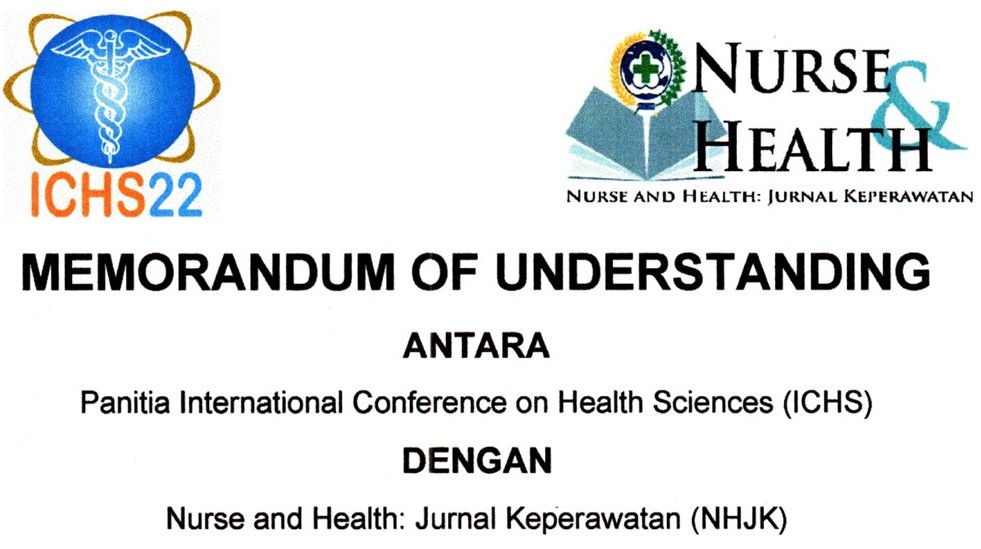THE EFFECT OF THE SKIN PERSONAL HYGIENE MODULES AS HEALTH EDUCATION MEDIA AGAINST KNOWLEDGE IN PREVENTION OF SKABIES
Abstract
Background: Scabies is often called body lice caused by mites Sarcoptes scabei. Scabies is often overlooked because it is not life-threatening so the priority for treatment is low, but chronic and severe scabies can cause dangerous complications (Harahap, 2008). This typical boarding disease is very closely related to the culture and values that exist in the Islamic boarding school environment. The students who suffer from scabies have complaints that they often itch at night so they can disturb their rest or sleep at night.Objectives: This study aimed to the effect of the skin personal hygiene modules as health education media against knowledge in prevention of skabies in the Islamic boarding school Roudhotul Muta’alimin Muta’alimat, Jabon Sub-District, Sidoarjo District, East Java Province, Indonesia.Method: The study design was used pre-experiment (one group pretest posttest). The population is all of students who lives in the Islamic boarding school Roudhotul Muta’alimin Muta’alimat, Jabon Sub-District, Sidoarjo District, East Java Province, Indonesia, amounting to 72 students. The sample of this study was 60 students using simple random sampling. The research instruments were skin personal hygiene modules and questionnaires. Data was analyzed using the Wilcoxon Signed Ranks Test.Results: The results showed that the level of knowledge before and after being given health education using the skin personal hygiene module was an increase, based on the Wilcoxon Signed Ranks Test analysis showed a difference with a significant value p = 0,000 and significance level α<0.05.Conclusion: Health education using the skin personal hygiene module had a positive impact on increasing the knowledge of the students at the Islamic boarding school Roudhotul Muta'alimin Muta’alimat Jabon Sidoarjo. Health education through counseling can be used to maintain and improve the health of the students in preventing scabies. Keywords: The skin personal hygiene module, knowledge, health education, Scabies.Downloads
References
Arifah, S. (2010). Pengaruh Pendidikan Kesehatan dengan Modul dan Media Visual Terhadap Peningkatan Pengetahuan dan Sikap Wanita Dalam Menghadapi Menopause (Studi Eksperimen Pada Wanita Premenopause di Desa Sumber Mulyo). Publikasi Penelitian.
Azizah, N. N. (2013). Hubungan Antara Kebersihan Diri dan Lama Tinggal Dengan Kejadian Penyakit Skabies di Pon-Pes Al-Hamdulillah Rembang (Doctoral dissertation, Universitas Muhammadiyah Surakarta).
Baker F. (2014). Scabies management. Paediatric Child Health.
Baur, B., Sarkar, J., Manna, N., & Bandyopadhyay, L. (2013). The pattern of dermatological disorders among patients attending the skin OPD of a tertiary care hospital in Kolkata, India. Journal of Dental and Medical Sciences, 3, 1-6.
Chosidow, O. (2006). Scabies. New England Journal of Medicine, 354(16), 1718-1727.
Departemen Kesehatan RI. 2007. Pedoman Penyelenggaraan dan Pembinaan Pos Kesehatan Pesantren. Retrieved from http://perpustakaan.depkes.go.id at January 25, 2018.
Golant, A. K., & Levitt, J. O. (2012). Scabies: a review of diagnosis and management based on mite biology. Pediatrics in review, 33(1), e1-e12.
Harahap Marwali. (2008). Ilmu Penyakit Kulit. Jakarta: Hipokrates.
Hilma, U. D., & Ghazali, L. (2014). Faktor-Faktor Yang Mempengaruhi Kejadian Skabies Di Pondok Pesantren Mlangi Nogotirto Gamping Sleman Yogyakarta. JKKI: Jurnal Kedokteran dan Kesehatan Indonesia, 6(3), 148-157.
Kuspriyanto. (2009). Pengaruh sanitasi dan higiene perorangan terhadap penyakit kulit. Surabaya: PPS Universitas Airlangga.
Lassa, S., Campbell, M. J., & Bennett, C. E. (2011). Epidemiology of scabies prevalence in the UK from general practice records. British Journal of Dermatology, 164(6), 1329-1334.
Notoatmodjo, S. (2012). Promosi kesehatan dan perilaku kesehatan. Jakarta: Rineka Cipta.
Potter, P. A., & Perry, A. G. (2012). Buku ajar fundamental keperawatan: konsep, proses, dan praktik. Jakarta: EGC.
Rathore p & Sungkar S. (2014). Prevalence & Risk Factors for Scabies among OPD Population of Tertiary Care Hospital Praveen Rathore Praveer Saxena Global Reseach Analysis, 2(11), 189-190.
Rahmawati, R. (2010). Hubungan Antara Faktor Pengetahuan Dan Perilaku Dengan Kejadian Skabies Di Pondok Pesantren Al-Muayyad Surakarta. (Skripsi). Fakultas Ilmu Kesehatan Masyarakat. Universitas Muhammadiyah Surakarta.
Shelley FW, Currie BJ. (2007). Problems in diagnosing scabies, a global disease in human and animal populations CMR.268-79.
Supratman. (2003). Dasar-Dasar Kesehatan Masyarakat. Surakarta: Keperawatan Fakultas Ilmu KesehatanUMS.
Utomo, T., Wahyuni, D., & Hariyadi, S. (2014). Pengaruh Model Pembelajaran Berbasis Masalah (Problem Based Learning) Terhadap Pemahaman Konsep dan Kemampuan Berpikir Kreatif Siswa (Siswa Kelas VIII Semester Gasal SMPN 1 Sumbermalang Kabupaten Situbondo Tahun Ajaran 2012/2013). Jurnal Edukasi, 1(1), 5-9.
Walgito, Bimo. (2010). Pengantar Psikologi Umum. Yogyakarta: Penerbit Andi.
Wijaya, Y. (2011). Faktor-Faktor yang Berhubungan dengan Kejadian Skabies pada Santri di Pondok Pesantren Al-Makmur Tungkar Kabupaten 50 Kota Tahun 2011.
Zayyid, M. M., Saadah, R. S., Adil, A. R., Rohela, M., & Jamaiah, I. (2010). Prevalence of scabies and head lice among children in a welfare home in Pulau Pinang, Malaysia. Tropical biomedicine, 27(3), 442-446.
Zeba, N., Shaikh, D. M., Memon, K. N., & Khoharo, H. K. (2014). Scabies in relation to hygiene and other factors in patients visiting Liaquat University Hospital, Sindh, Pakistan. Age (years), 9, 10-19.
Authors who publish with Nurse and Health: Jurnal Keperawatan agree to the following terms:
- Authors retain copyright licensed under a Creative Commons Attribution-NonCommercial 4.0 (CC BY-NC 4.0), which allows others to remix, tweak, and build upon the authors' work non-commercially, and although the others' new works must also acknowledge the authors and be non-commercial, they don't have to license their derivative works on the same terms.
- Authors are permitted and encouraged to post their work online (e.g., in institutional repositories or on their website) prior to and during the submission process, as it can lead to productive exchanges, as well as earlier and greater citation of published work (See The Effect of Open Access). Authors can archive pre-print and post-print or publisher's version/PDF.























